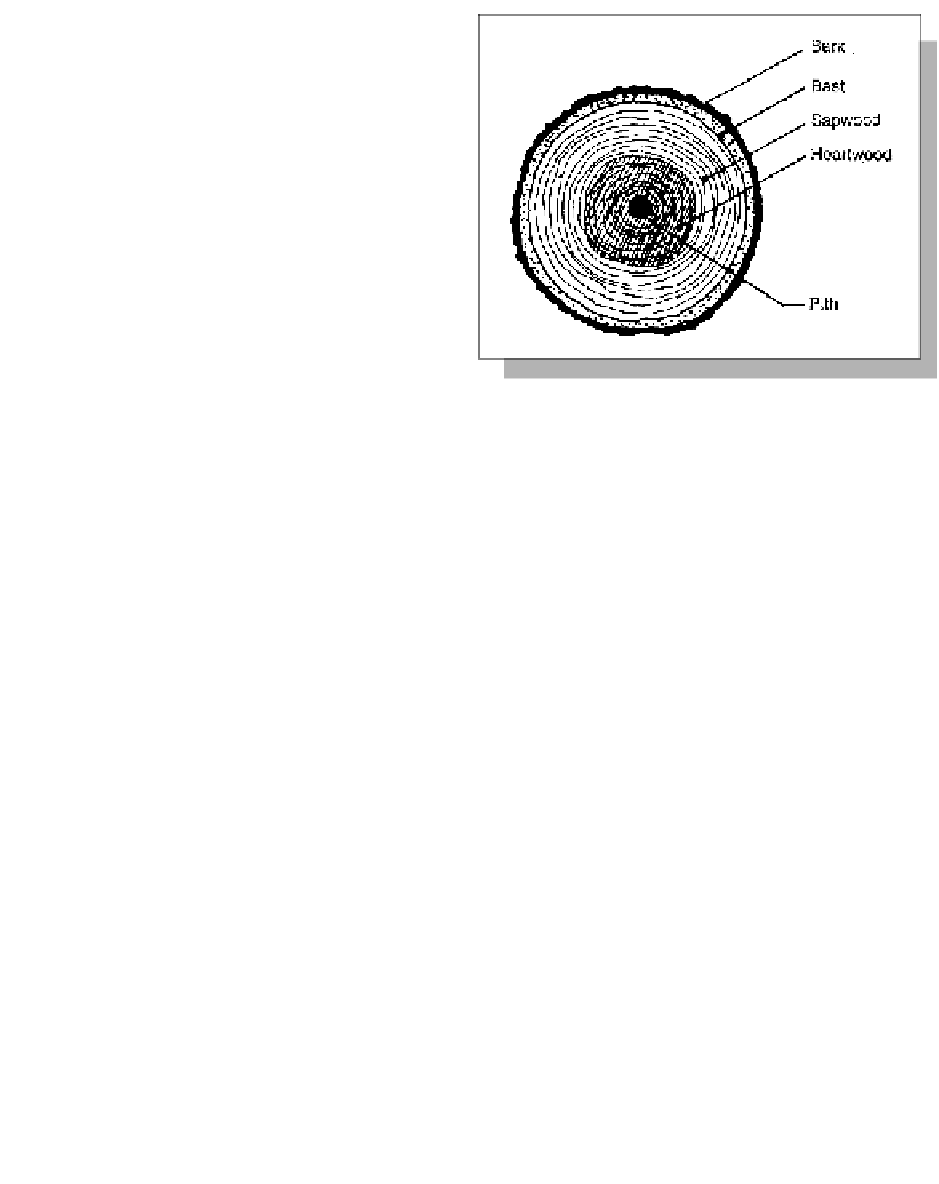Civil Engineering Reference
In-Depth Information
all contain carbon, oxygen, hydrogen and
nitrogen as their main chemical constituents.
They also contain small amounts of minerals,
which are left over in the ashes if the tree is
burned. A healthy tree consists mainly of cel-
lulose, lignin and other organic substances
such as proteins, sugar, resin and water. In
softwoods the main constituent is cellulose;
in hardwoods it is primarily lignin.
A cross-section of a tree trunk divides into
bark, bast, heartwood, sapwood and pith.
The growth rings in a tree are visible because
summer wood is darker than spring wood.
The number of rings gives the age of the tree,
and the width of the rings indicates the
growth conditions and therefore the quality.
In coniferous trees, narrow rings usually indicate better quality than wide rings.
In deciduous trees wide rings indicate better quality timber.
On the island of Madagascar there are 1000 species of tree. In northern Europe
there are approximately 35 species, of which about two thirds can be used for con-
struction. Despite this, usually only two coniferous trees are used (spruce and pine),
and increasingly large areas supporting deciduous trees are taken over for the cul-
tivation of spruce and pine forests. There is also a tendency to replace pine with
spruce, as it produces less waste and is more practical to handle in the sawmill.
Many deciduous timbers have qualities which should encourage their more
widespread use in building. In certain areas they are superior to spruce and pine,
because of their higher resistance to moisture and greater strength. Ash, for
example, is 60-70 per cent stronger than spruce.
Building using only accessible deciduous trees, and the use of materials
according to their strength, could reduce the amount of structural timber needed
by 25 per cent (Bunkholt, 1988).
In India, 300 different types of timber have been analysed to assess how useful
they are in building. Factors such as weight, strength properties, durability and
damage through shrinkage have been investigated. Timber varieties are then
graded according to their properties. By doing this, a whole new range became
available for use in building, including types previously classified as non-
resources or firewood.
Figure 10.1: Cross-section of a tree trunk.
Forestry
Forestry is often managed as a monoculture of coniferous trees, mainly spruce.
This is especially the case when producing timber for the cellulose industry.

